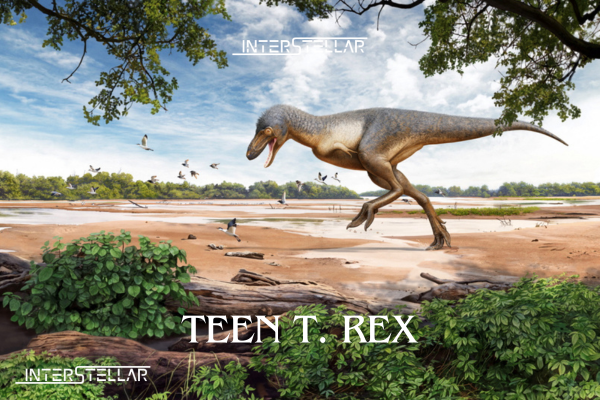Rare Adolescent T. Rex Fossil Unearthed by Kids in North Dakota
A rare fossil of an adolescent Tyrannosaurus rex has been discovered in North Dakota’s badlands. This significant find offers valuable scientific insights into the life history of this iconic dinosaur and shares an exciting story of its discovery by three young fossil hunters.
Discovery of “Teen Rex”
The Denver Museum of Nature & Science announced the discovery of the fossil, nicknamed “Teen Rex,” on Tuesday. The fossil will be studied and displayed at the museum.
In July 2022, brothers Liam and Jessin Fisher, aged 7 and 10, along with their cousin, Kaiden Madsen, aged 9, were hiking and looking for fossils. They were accompanied by Sam Fisher, father of Liam and Jessin, on land managed by the U.S. Bureau of Land Management near Marmarth, southwestern North Dakota. Liam and his father spotted a large leg bone protruding from the ground.
“My dad hollered for Jessin and Kaiden to come, and they came running,” said Liam, now 9. “And dad asked, ‘What is this?’ And Jessin said, ‘That’s a dinosaur.'”
Excavation and Identification
Sam Fisher sent a photo to paleontologist Tyler Lyson, a Marmarth native and curator of vertebrate paleontology at the Denver Museum of Nature & Science. Lyson obtained excavation permits, and in July 2023, they all returned to the site.
Initially, they thought the leg belonged to a plant-eating duckbilled dinosaur. However, on the first day of the excavation, Jessin and Lyson uncovered the lower jaw with several large T. rex teeth.
“It still gives me goosebumps,” Lyson said.
Significance of the Fossil
This Tyrannosaurus was approximately 13-15 years old, about two-thirds of its adult size, measuring 25 feet (7.6 meters) long and weighing 3,500 pounds (1,600 kg). Tyrannosaurus was fully grown at around 18-21 years. The largest-known Tyrannosaurus, a specimen named Sue at the Field Museum in Chicago, is 40.5 feet (12.3 meters) long.
The fossil dates back to around 67 million years ago, near the end of the Cretaceous Period. Tyrannosaurus and other dinosaurs, except their bird descendants, were wiped out 66 million years ago after an asteroid struck Earth.
The fossil was found in the Hell Creek Formation region, known for preserving Earth’s last dinosaur ecosystem before the mass extinction. The animal’s body likely ended up on a sandbar in an ancient river system.
Future Studies and Insights
The completeness of the skeleton is still unclear as many bones remain embedded in a three-ton rock chunk being studied at the museum. The fossil includes parts of the skull, hipbone, vertebrae, and a leg.
Juvenile T. rexes were more lightly built, with long legs and a more streamlined skull, differing from adults in body type and possibly in hunting habits. Studying juvenile specimens helps reveal growth rates and body changes during maturation. Only a few such fossils are available for study, making this discovery particularly valuable.
A documentary crew filmed the excavation, and the film “T. REX” is set to be released on June 21.





